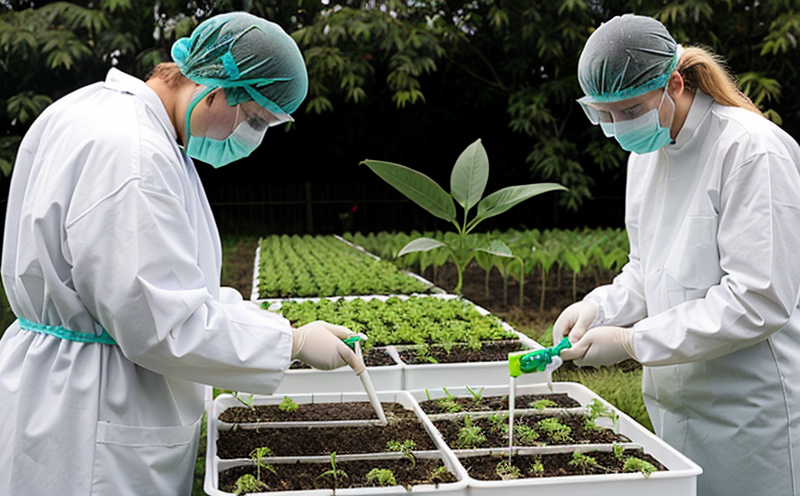Xylella Fastidiosa Detection in Plants
The bacterium Xylella fastidiosa is a pathogen that can cause significant economic losses to agriculture and forestry by infecting various economically important plants. It primarily affects crops like olives, grapes, citrus, almond trees, and vines. The disease it causes, known as Pierce’s disease in grapes and oleander leaf scorch in ornamental plants, results in a reduction of crop yields, withering, and eventual death of the plant.
The ability to detect Xylella fastidiosa early is critical for effective management strategies. Timely intervention can prevent widespread outbreaks that could devastate entire orchards or vineyards. This service provides reliable detection using advanced molecular techniques such as PCR (Polymerase Chain Reaction) and ELISA (Enzyme-Linked Immunosorbent Assay). These methods ensure high sensitivity, allowing for the accurate identification of Xylella fastidiosa even in low concentrations.
The testing process involves collecting plant samples—typically from symptomatic leaves or stems—and preparing them according to specific protocols. Once prepared, these samples undergo analysis using the aforementioned molecular techniques. The results are typically available within 24-48 hours, depending on the complexity of the sample and the workload in the laboratory.
Our expertise lies in providing accurate, rapid, and reliable detection services for Xylella fastidiosa. By partnering with us, clients can gain a competitive edge by preventing costly outbreaks and ensuring compliance with regulatory standards such as those set forth by ISO 16129 for laboratory quality management.
The importance of this service cannot be overstated. In sectors like agriculture and forestry, the ability to detect Xylella fastidiosa early can mean the difference between containment and widespread disaster. Our service ensures that affected areas are quickly identified and quarantined, minimizing the spread of the pathogen.
To summarize, our Xylella Fastidiosa Detection in Plants service offers a critical tool for protecting economically important crops from this devastating pathogen. By leveraging advanced molecular techniques, we ensure accurate, rapid detection, enabling timely intervention to prevent further damage and comply with international standards.
Quality and Reliability Assurance
- Accurate Sample Preparation: Ensuring that samples are prepared correctly according to international standards such as ISO 16129 is crucial for accurate results.
- Rigorous Quality Control: Our laboratory employs strict quality control measures at every stage of the testing process. This includes regular calibration of instruments and validation of test methods.
- Trained Personnel: Only certified personnel are involved in sample handling and analysis to ensure consistency and accuracy.
- Continuous Improvement: We continually update our protocols based on the latest scientific research and technological advancements to maintain high standards.
Competitive Advantage and Market Impact
The ability to detect Xylella fastidiosa early provides a significant competitive advantage in agriculture and forestry. By identifying affected areas promptly, clients can implement targeted interventions that minimize the impact of the pathogen. This not only protects their current crop but also ensures long-term sustainability by preserving soil health and preventing future outbreaks.
In terms of market impact, our service helps maintain global standards for agricultural produce. By ensuring that crops are free from Xylella fastidiosa, we contribute to the reputation of high-quality products that can be sold internationally without restrictions. This is particularly important in export markets where regulatory compliance is stringent.
Furthermore, our service supports sustainable farming practices by promoting early detection and intervention. This reduces the need for extensive chemical treatments that could harm the environment, thereby aligning with broader sustainability goals within the agricultural sector.
Use Cases and Application Examples
| Use Case | Description |
|---|---|
| Vineyard Management | Detecting Xylella fastidiosa in vineyards helps prevent Pierce’s disease, which can decimate grape yields. |
| Citrus Plantations | Identifying the pathogen early allows for containment and treatment of oleander leaf scorch to protect citrus trees. |
| Agricultural Research | Our service supports research into the spread and control of Xylella fastidiosa, contributing to the development of effective management strategies. |
| Forestry Conservation | In forested areas, detecting this pathogen helps in protecting valuable timber species from significant loss due to disease. |





